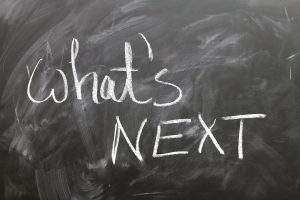For many reasons, our community colleges will not look the same when we finally emerge from the pandemic. Recently I read a review of a first novel, titled “You Never Get it Back,” by a young woman named Cara Blue Adams. Her title offers an apt description of the ennui that many of us are feeling right now as we think about the future. As the heroine points out, “Any story can be happy or sad, I think, depending on where you begin it and where it ends.” That one sentence both characterizes and forecasts our future. We must embrace this pandemic, as wearisome as it has been, as burned out and as tired as many of us feel, and finally commit to moving beyond it. Good times will come again . . . although maybe not tomorrow . . . or even next year. So, no matter how hard it feels right now, there has never been a better moment for us to double down on plans to shape our future.
been, as burned out and as tired as many of us feel, and finally commit to moving beyond it. Good times will come again . . . although maybe not tomorrow . . . or even next year. So, no matter how hard it feels right now, there has never been a better moment for us to double down on plans to shape our future.
Routinely, we read messages that predict that colleges will be risk averse for years to come. I, for one, believe that such a cautionary strategy will simply extend the feelings of ennui and malaise. This is not the time to tiptoe back into full force. With an increasing demand for short-term credentialing and a national debate emerging about the cost of college against the need for degrees, community colleges could not be in a better position to step forward to meet these demands. We should recognize and seize the opportunity that lies before us.
Our college is preparing to move aggressively forward to achieve this on five parallel paths.
- Position ourselves financially to provide a stable platform to offset both the losses and the gains of this pandemic.
- Move aggressively forward on a series of enrollment expansion plans.
- Reconfigure ourselves to gain maximum advantage from a very lean executive structure.
- Emerge from the pandemic as the strong and resilient institution that we are. We are going to do what we say we will do and that is to recast ourselves as a 21st century college for the 21st century students sitting in our classrooms for the jobs awaiting them in the 21st century.
- Position ourselves as key to the economic revitalization of our region and our state.
The lessons we have learned during this pandemic are many. Although there are many questions to ask about the future: our work life, our habits, our schedules, the remote and hybrid approaches to gatherings, meetings, and work, I want to engender a spirit of optimism . . . a spirit of hope. When the dust settles, we will realize how little we need, how very much we actually have, and the true value of human connection both in our workplace an in our lives.
